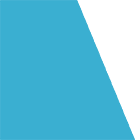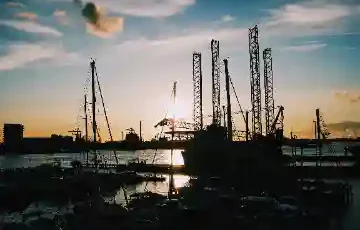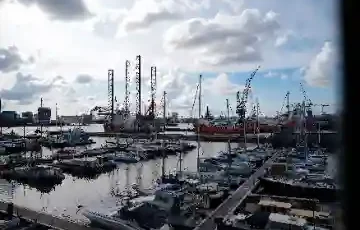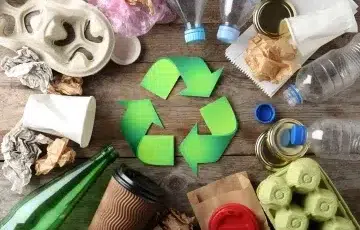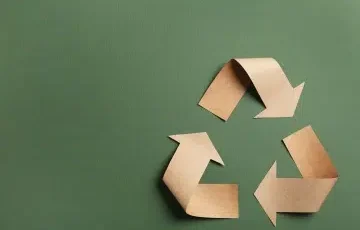A product recall in the Netherlands constitutes a coordinated action whereby a business retrieves unsafe products from the supply chain and consumers. In a public recall, the product has already reached end users, necessitating direct communication and retrieval measures according to the General Product Safety Regulation.
A Product Recall under Dutch law action often strikes businesses unexpectedly. Within hours, crucial decisions must be made regarding communication, notification to the Netherlands Food and Consumer Product Safety Authority (NVWA), and contact with trading partners. The legal consequences of a product recall are far-reaching and directly affect product liability, insurance matters, and contractual recourse options. For manufacturers, importers, and distributors in the Netherlands, strict legislation applies concerning product safety, whereby both national and European regulations are applicable.
What Constitutes a Product Recall Under Dutch Law?
A product recall encompasses all measures aimed at retrieving unsafe products from the market, including withdrawal at retailers and recall at end users. Article 5 of the General Product Safety Regulation (GPSR) mandates immediate corrective action when serious risks are identified.
The legislator distinguishes between a silent recall (withdrawal) whereby products are removed from the supply chain before reaching consumers, and a public recall whereby end users must be informed directly. This distinction carries significant legal implications for notification requirements and communication strategies.
According to the General Product Safety Regulation, primary responsibility rests with the manufacturer or importer bringing products onto the European Union market. These market participants bear strict liability for defects in their products, even without proven fault. Moreover, distributors and retailers can be held liable when they fail to exercise sufficient due diligence.
A recall action becomes mandatory once a serious safety risk is identified. You assess this risk based on the severity of potential harm, the probability of the risk materializing, and the vulnerability of affected consumer groups. When uncertain about necessity, the NVWA advises contacting their notification desk immediately.
Which Products Fall Under Recall Obligations in the Netherlands?
The law distinguishes between food and non-food products. Food items fall under the Food Safety Regulation (EC) 178/2002, while non-food articles are regulated via the Product Safety Directive. Both frameworks obligate market participants to take immediate action when safety risks emerge.
For non-food products, approximately 85% of all recalls involve electronic appliances, toys, or textiles. CE markings play an important role as conformity declarations, although these provide no absolute safety guarantee. Importers bear particular responsibility for products from countries outside the EU, whereby they must guarantee compliance with European safety standards.
Consequently, businesses operating in the Netherlands must maintain comprehensive documentation systems. Product traceability through batch numbers, supplier information, and distribution logs proves essential during recall procedures. Furthermore, these records must remain available for at least ten years for products with extended lifecycles.
How Do You Organize an Effective Product Recall Under Dutch Law?
Immediately establish a crisis document containing product identification, risk analysis, recall strategy, and communication plan. This document forms the foundation for all subsequent steps and prevents ambiguity during execution according to Article 8 GPSR requirements.
The first hours often determine your recall action’s success. Begin by assembling a crisis team consisting of legal expertise, quality management, communication specialists, and supply chain managers. Within 24 hours, clarity must exist regarding which batch numbers, EAN codes, and sales locations are involved.
Use the official recall template from the European Commission for your communication. This model satisfies all legal requirements and contains mandatory elements such as product identification, risk description, and consumer instructions. Always place the title “Recall Action Concerning Product Safety” at the top of your message for maximum recognition.
What Solutions Must You Offer Consumers in the Netherlands?
Offer consumers at least two of these three options: repair, replacement, or complete refund of the purchase price. These solutions must be reasonable and not disproportionately burden consumers. Repair by consumers themselves only qualifies when this is safe and straightforwardly executable without technical knowledge.
Note that approximately 75% of consumers choose direct refund over repair or replacement. Anticipate this in your liquidity planning and communicate transparently about processing time. On average, a recall process takes between 6 and 18 months from initial notification to complete settlement.
Therefore, financial preparedness proves crucial. Dutch businesses must ensure sufficient reserves or insurance coverage to manage immediate refund obligations. Additionally, contractual arrangements with retailers often include penalty clauses for delayed refund processing, potentially reaching 15% of total recall costs.
What Are Your Notification Obligations to the Netherlands Food and Consumer Product Safety Authority?
Report a recall action immediately to the NVWA (“Netherlands Food and Consumer Product Safety Authority“) via the official notification form, including the recall message according to the European model. The NVWA subsequently publishes your notification on its website and social media channels to inform consumers.
The notification obligation applies to all market participants who identify a serious safety risk. Once you have drafted your recall message, submit it for approval to the NVWA. After approval, you publish the message on your own channels, whereupon the NVWA (Netherlands Food and Consumer Product Safety Authority) redistributes it via their communication platforms.
Always send the product photo as a separate JPG file with your notification and mention the direct link to the recall page on your website. The NVWA uses this information for publication on nvwa.nl, Facebook, and X (formerly Twitter), enabling you to achieve greater reach among consumers.
What Deadlines Apply for Notifications Under Dutch Law?
Legal notification deadlines vary depending on risk severity. For serious and immediate danger, a notification obligation within 24 hours applies. For less urgent situations, the NVWA (Netherlands Food and Consumer Product Safety Authority) maintains a 72-hour deadline. Delayed notification can lead to administrative fines starting from €10,000 and reputational damage through public naming and shaming.
Besides the NVWA, you may also need to inform your insurer within the deadline stipulated in policy conditions, usually 48 hours after identification. Failure to do so can jeopardize coverage under your product liability insurance. Document all notifications carefully with date and time for potential later evidence requirements.
Furthermore, international supply chains complicate notification obligations. When products have been distributed across multiple EU member states, you must coordinate notifications through the RAPEX system (Rapid Alert System for dangerous products). This system ensures information automatically gets shared between national authorities, though interpretation of safety standards varies considerably between jurisdictions.
How Do You Communicate the Recall to Consumers in the Netherlands?
Inform customers with known contact details directly via personal mailing. Consumers who registered the product or participate in your loyalty program can be reached directly with targeted communication. This approach yields a response rate of 40% to 60%, significantly higher than public appeals.
Cannot you reach all affected consumers directly? Then communicate via multiple public channels simultaneously. Place the recall notice prominently on your website’s homepage with clear redirection to a dedicated recall page. Additionally, use social media platforms such as Facebook, Instagram, and LinkedIn for maximum reach.
Which Communication Channels Work Best Under Dutch Law?
Deploy traditional media such as daily newspapers and door-to-door publications alongside digital channels, especially for products purchased by older target groups. Research shows multi-channel communication increases response rates by 35% compared to single-channel approaches.
In physical stores, place conspicuous posters at both entrance and checkout. Do not forget advertising inserts where you include a separate recall notice. Retailers play a crucial role in reaching consumers and must actively cooperate in the recall action.
Moreover, Dutch consumer protection organizations like the Consumentenbond can amplify your message through their communication channels. However, this requires transparent cooperation and willingness to share detailed information about the safety issue. Approximately 60% of successful recalls involve collaborative communication with consumer advocacy groups.
Do you want certainty about your legal position during a product recall? Our specialized lawyers in Amsterdam analyze your situation and advise on optimal communication strategy, notification obligations, and liability risks.
What Are the Legal and Financial Consequences in Dutch Law?
A product recall brings substantial costs. Average direct costs vary between €500,000 and €2 million for mid-sized enterprises, depending on the number of products involved and the recall action’s complexity. These costs encompass recall logistics, replacement or repair, communication expenditures, and legal assistance.
Indirectly, businesses often suffer greater damage through revenue loss, image damage, and loss of trading relationships. Research indicates that 60% of companies lose substantial market share after a public recall. Contractual penalties from retailers and suppliers can reach up to 25% of annual turnover in specific product segments.
Can I Recover Damages from My Supplier Under Dutch Law?
Recovery possibilities exist when you can demonstrably prove the product defect originated at the supplier and not in your production phase. Contractual indemnities and general terms determine precise recovery rights according to Articles 6:74 and 6:75 Dutch Civil Code.
The burden of proof lies with the party seeking recovery. Therefore, meticulously document all specifications, quality inspections, and supplier guarantees. In practice, 45% of recovery attempts succeed when clear production tracing exists via batch numbers and quality registrations.
Note that limitation of recovery rights occurs within five years according to Article 3:310 Dutch Civil Code. Start recovery procedures timely to prevent loss of rights. International suppliers complicate recovery through differences in applicable law and competent jurisdiction.
What Role Does Product Liability Insurance Play in the Netherlands?
Your product liability insurance typically covers both third-party damage and recall costs, provided you act within policy conditions. Standard policies often cover exclusively direct recall costs up to a sublimit of €250,000 to €500,000. Comprehensive policies offer coverage up to €5 million including image damage and revenue loss.
Critical are the exclusions in your policy. Many insurers exclude damage resulting from deliberately taken risks, inadequate quality controls, or non-compliance with safety standards. Always discuss with your insurer beforehand which costs are covered and request written confirmation of coverage.
Furthermore, Dutch insurance law requires immediate notification of circumstances that might lead to claims. Article 7:941 Dutch Civil Code stipulates that delayed notification can result in reduced coverage proportional to the insurer’s disadvantage. Therefore, establish clear internal protocols for insurance notification during recall procedures.
How Do You Prevent a Product Recall According to Dutch Legislation?
Implement robust quality management systems with systematic risk assessment in every production phase. Certification according to ISO 9001 or industry-specific standards reduces recall risk by approximately 70% according to Netherlands Standardization Institute research.
Conduct regular risk analyses on all products in your portfolio. Identify potential defects early by systematically analyzing consumer complaints and recognizing patterns. Approximately 40% of recalls could have been prevented through timely follow-up of initial quality signals.
Develop a preventive recall plan before problems arise. This plan contains contact details of all relevant stakeholders, templates for recall messages, and clear decision trees for different scenarios. Businesses with a prepared recall plan act on average 60% faster in acute situations.
What Documentation Is Essential Under Dutch Law?
Maintain complete product traceability via batch numbers, supplier information, and distribution logs. This administration must remain available for at least ten years for products with extended usage duration. For food products, a retention period of three years after the expiration date usually suffices.
Record all quality controls with date, executor, and findings. Test reports from certification institutions and declarations of conformity constitute crucial evidence in potential liability discussions. Digitalization of this documentation significantly accelerates locating affected products during an acute recall.
Additionally, the General Data Protection Regulation (GDPR) imposes specific requirements on storing consumer contact information for recall purposes. You may retain customer data for recall communication under legitimate interest grounds, but must implement appropriate security measures according to Article 32 GDPR to prevent unauthorized access.
Practice Example: Electronic Toys from China
A Dutch importer brought 25,000 electronic toy articles onto the market, originating from China. After six weeks, a consumer identified battery overheating, resulting in fire hazard. The importer immediately started an internal investigation and discovered defective battery isolation in three specific production batches.
Within 24 hours, the importer drafted a recall notice according to the European model and reported this to the NVWA. Retailers received instructions to remove all affected articles from shelves. Via social media, website communication, and direct mailing, they reached 12,000 buyers, of whom 65% returned the product for complete refund.
Total recall costs amounted to €380,000, consisting of €180,000 product value, €95,000 logistics costs, and €105,000 communication and legal assistance. The product liability insurance covered €280,000 under the recall sublimit. Recovery from the Chinese manufacturer proved impossible due to unclear contractual agreements and lack of English-language documentation.
This case illustrates common pitfalls in international supply chains. The absence of clear quality specifications in English, inadequate factory audits, and missing contractual indemnity clauses prevented successful cost recovery. Moreover, Chinese jurisdiction clauses in supplier contracts complicated enforcement of Dutch court judgments.
Contact our law firm in Amsterdam for personal legal advice about your specific situation. Our specialists assist with recall planning, communication strategies, and recovery procedures against suppliers or insurers.
What Changes in European Regulation Affect Dutch Businesses?
The new Product Liability Directive (EU) 2024/2853 introduces stricter liability for manufacturers. Software updates and digital products now explicitly fall under product liability, relevant for increasingly connected devices. Implementation into Dutch law follows within two years after publication.
Additionally, the revised General Product Safety Regulation (GPSR) tightens traceability requirements. Online marketplaces receive extensive obligations to screen selling parties on safety compliance. For businesses, this means stricter administrative burdens and increased supervisory powers for the NVWA.
How Do You Prepare for New Legislation in the Netherlands?
Invest in digital traceability systems that satisfy future identification requirements. Blockchain-based tracking gains popularity in the food sector where complete supply chain transparency becomes mandatory. Implementation costs vary between €15,000 and €75,000 depending on business size.
Revise contracts with suppliers and distributors to clearly allocate liability according to new directives. Legal clauses concerning software updates, cybersecurity, and data integrity become essential for digital products. Approximately 55% of existing contracts do not satisfy future liability standards.
Furthermore, the EU Artificial Intelligence Act introduces specific requirements for AI-powered products entering the Dutch market. High-risk AI systems require conformity assessments before market introduction, with penalties up to €30 million or 6% of global annual turnover for non-compliance. Dutch businesses must integrate AI risk assessments into product development cycles.
Important Considerations for International Recalls
Recalls often transcend national borders when products circulate within the European internal market. Coordination between authorities proceeds via the RAPEX system, whereby information automatically gets shared between member states. Dutch businesses must account for varying interpretations of safety risks per country.
German authorities, for example, maintain stricter standards for chemical product safety than the Netherlands, resulting in recall requests that would not be mandatory here. French legislation contains specific sanctions for delayed consumer notification reaching up to €300,000 per violation. Legal expertise per jurisdiction prevents costly complications.
What Role Does Applicable Law Play in the Netherlands?
In cross-border product liability, the Rome II Regulation determines which law applies. Usually the law of the country where damage occurred applies, which can bring different liability standards according to Article 5 Rome II.
Consumers can choose to litigate in their country of residence, regardless of where you as a business are established. This forum shopping right complicates defense and significantly increases litigation costs. On average, cross-border procedures cost 2.5 times more than national legal proceedings.
Contractual choice of law in B2B relationships offers some certainty, provided this satisfies mandatory law boundaries from the Rome I Regulation. Arbitration clauses seated in the Netherlands prevent foreign procedures, although these are not enforceable against consumers under Article 6:236 Dutch Civil Code.
Additionally, the Brussels Ia Regulation governs jurisdiction in civil and commercial matters within the EU. Dutch courts maintain jurisdiction when the defendant is domiciled in the Netherlands or when specific circumstances warrant Dutch competence, such as when the harmful event occurred within Dutch territory.
Frequently Asked Questions About Product Recalls in Dutch Law
Must I always organize a public recall with a safety risk? No, when the product has not yet reached the end user, a silent recall suffices whereby you remove the product from the supply chain. Once consumers have purchased the product, public recall usually becomes mandatory according to NVWA guidelines.
Who pays recall costs with defects from my supplier? Initially, you as a market participant bear all recall costs. Recovery from the supplier requires separate legal steps based on contractual agreements and evidence of production errors. Successful recovery procedures take on average 18 to 36 months under Dutch civil procedure.
Can I insure a product recall? Yes, via comprehensive product liability insurance with recall extension. Standard policies offer limited coverage up to €250,000. Consider increased coverage limits for products with high volume or serious safety risks, particularly when operating across multiple EU jurisdictions.
What sanctions do you risk with non-compliance in the Netherlands? The NVWA can impose administrative fines starting from €10,000 up to maximum €900,000 for serious violations according to the Economic Offences Act. Additionally, criminal liability exists for gross negligence resulting in injury, with prison sentences up to four years. In civil law, you are unlimitedly liable for all damage under Article 6:185 Dutch Civil Code.
How long does an average recall take? From first identification to complete settlement, a recall usually takes 12 to 18 months. Complex international recalls with legal procedures extend to 36 months or longer. Speed of action in the first 48 hours often determines ultimate processing time and final costs.
What happens when consumers ignore recall notices? Under Dutch law, you maintain product liability even when consumers fail to respond to recall communications. Therefore, multiple communication waves prove necessary, typically at 2-week intervals over a 6-month period. Document all communication attempts meticulously for potential liability defense.
Product recalls confront businesses with complex legal, operational, and financial challenges. Proactive preparation, knowledge of legal obligations, and professional support make the difference between manageable damage and existential business risks. Invest in prevention, documentation, and crisis readiness to make your organization resilient against product safety problems. Dutch legislation provides clear frameworks, but successful recall management requires expertise, swift action, and comprehensive stakeholder coordination across the entire supply chain.

